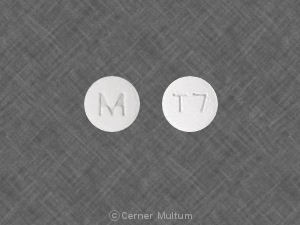What is the most important information I should know about tramadol?
You should not take tramadol if you have severe breathing problems, a blockage in your stomach or intestines, or if you have recently used alcohol, sedatives, tranquilizers, narcotic medication, or an MAO inhibitor (isocarboxazid, linezolid, methylene blue injection, phenelzine, rasagiline, selegiline, tranylcypromine, and others).
Tramadol can slow or stop your breathing, and may be habit-forming. MISUSE OF THIS MEDICINE CAN CAUSE ADDICTION, OVERDOSE, OR DEATH, especially in a child or other person using the medicine without a prescription.
Tramadol should not be given to a child younger than 12 years old. Ultram ER should not be given to anyone younger than 18 years old.
Taking tramadol during pregnancy may cause life-threatening withdrawal symptoms in the newborn.
Fatal side effects can occur if you use tramadol with alcohol, or with other drugs that cause drowsiness or slow your breathing.
What is tramadol?
Tramadol is a narcotic-like pain reliever.
Tramadol is used to treat moderate to severe pain.
The extended-release form of this medicine is for around-the-clock treatment of pain. This form of tramadol is not for use on an as-needed basis for pain.
Tramadol may also be used for purposes not listed in this medication guide.
What should I discuss with my healthcare provider before taking tramadol?
You should not take tramadol if you are allergic to it, or if you have:
- severe asthma or breathing problems;
- a blockage in your stomach or intestines;
- if you have recently used alcohol, sedatives, tranquilizers, or narcotic medications; or
- if you have used an MAO inhibitor in the past 14 days (such as isocarboxazid, linezolid, methylene blue injection, phenelzine, rasagiline, selegiline, or tranylcypromine).
Tramadol should not be given to a child younger than 12 years old. Ultram ER should not be given to anyone younger than 18 years old.
Do not give tramadol to anyone younger than 18 years old who recently had surgery to remove the tonsils or adenoids.
Seizures have occurred in some people taking tramadol. Talk with your doctor about your seizure risk, which may be higher if you have ever had:
- a head injury, epilepsy or other seizure disorder;
- drug or alcohol addiction;
- a metabolic disorder; or
- if you also use certain antibiotics, antifungal medications, heart or blood pressure medications, or medicines to treat HIV or AIDS.
If you use tramadol while you are pregnant, your baby could become dependent on the drug. This can cause life-threatening withdrawal symptoms in the baby after it is born. Babies born dependent on habit-forming medicine may need medical treatment for several weeks. Tell your doctor if you are pregnant or plan to become pregnant.
Do not breast-feed while taking tramadol. This medicine can pass into breast milk and cause drowsiness, breathing problems, or death in a nursing baby.
To make sure tramadol is safe for you, tell your doctor if you have ever had:
- liver or kidney disease;
- a stomach disorder; or
- mental illness, or suicide attempt.
How should I take tramadol?
Follow all directions on your prescription label. Tramadol can slow or stop your breathing, especially when you start using this medicine or whenever your dose is changed. Never take tramadol in larger amounts, or for longer than prescribed. Tell your doctor if the medicine seems to stop working as well in relieving your pain.
Tramadol may be habit-forming, even at regular doses. Never share this medicine with another person, especially someone with a history of drug abuse or addiction. MISUSE OF PAIN MEDICATION CAN CAUSE ADDICTION, OVERDOSE, OR DEATH, especially in a child or other person using the medicine without a prescription. Selling or giving away tramadol is against the law.
Stop taking all other around-the-clock narcotic pain medications when you start taking tramadol.
Tramadol can be taken with or without food, but take it the same way each time.
Do not crush, break, or open an extended-release tablet or capsule (ConZip, Ultram ER). Swallow it whole to avoid exposure to a potentially fatal dose.
Never crush or break a tramadol pill to inhale the powder or mix it into a liquid to inject the drug into your vein. This practice has resulted in death.
If you use the tramadol extended-release tablet, the tablet shell may pass into your stools (bowel movements). This is normal and does not mean that you are not receiving enough of the medicine.
Do not stop using tramadol suddenly, or you could have unpleasant withdrawal symptoms. Ask your doctor how to safely stop using tramadol.
Store at room temperature away from moisture and heat. Keep track of your medicine. Tramadol is a drug of abuse and you should be aware if anyone is using your medicine improperly or without a prescription.
Do not keep leftover opioid medication. Just one dose can cause death in someone using this medicine accidentally or improperly. Ask your pharmacist where to locate a drug take-back disposal program. If there is no take-back program, flush the unused medicine down the toilet.
What happens if I miss a dose?
Since tramadol is used for pain, you are not likely to miss a dose. Skip any missed dose if it is almost time for your next scheduled dose. Do not take extra medicine to make up the missed dose.
What happens if I overdose?
Seek emergency medical attention or call the Poison Help line at 1-800-222-1222. A tramadol overdose can be fatal, especially in a child or other person using the medicine without a prescription. Overdose symptoms may include slow heart rate, severe drowsiness, cold and clammy skin, very slow breathing, or coma.
What should I avoid while taking tramadol?
Do not drink alcohol. Dangerous side effects or death could occur.
Tramadol may impair your thinking or reactions. Avoid driving or operating machinery until you know how this medicine will affect you. Dizziness or severe drowsiness can cause falls or other accidents.
What are the possible side effects of tramadol?
Get emergency medical help if you have signs of an allergic reaction (hives, difficult breathing, swelling in your face or throat) or a severe skin reaction (fever, sore throat, burning in your eyes, skin pain, red or purple skin rash that spreads and causes blistering and peeling).
Like other narcotic medicines, tramadol can slow your breathing. Death may occur if breathing becomes too weak.
A person caring for you should seek emergency medical attention if you have slow breathing with long pauses, blue colored lips, or if you are hard to wake up.
Call your doctor at once if you have:
- noisy breathing, sighing, shallow breathing;
- a slow heart rate or weak pulse;
- a light-headed feeling, like you might pass out;
- seizure (convulsions);
- missed menstrual periods;
- impotence, sexual problems, loss of interest in sex; or
-
low cortisol levels --nausea, vomiting, loss of appetite, dizziness, worsening tiredness or weakness.
Seek medical attention right away if you have symptoms of serotonin syndrome, such as: agitation, hallucinations, fever, sweating, shivering, fast heart rate, muscle stiffness, twitching, loss of coordination, nausea, vomiting, or diarrhea.
Serious side effects may be more likely in older adults and those who are overweight, malnourished, or debilitated.
Long-term use of opioid medication may affect fertility (ability to have children) in men or women. It is not known whether opioid effects on fertility are permanent.
Common side effects may include:
- headache, dizziness, drowsiness, tired feeling;
- constipation, diarrhea, nausea, vomiting, stomach pain;
- feeling nervous or anxious; or
- itching, sweating, flushing (warmth, redness, or tingly feeling).
This is not a complete list of side effects and others may occur. Call your doctor for medical advice about side effects. You may report side effects to FDA at 1-800-FDA-1088.
What other drugs will affect tramadol?
Narcotic (opioid) medication can interact with many other drugs and cause dangerous side effects or death. Be sure your doctor knows if you also use:
-
other narcotic medications --opioid pain medicine or prescription cough medicine;
-
a sedative like Valium --diazepam, alprazolam, lorazepam, Ativan, Klonopin, Restoril, Tranxene, Versed, Xanax, and others;
-
drugs that make you sleepy or slow your breathing --a sleeping pill, muscle relaxer, tranquilizer, antidepressant, or antipsychotic medicine; o
-
drugs that affect serotonin levels in your body --medicine for depression, Parkinson's disease, migraine headaches, serious infections, or prevention of nausea and vomiting.
This list is not complete. Other drugs may interact with tramadol, including prescription and over-the-counter medicines, vitamins, and herbal products. Not all possible interactions are listed in this medication guide.
Where can I get more information?
Your pharmacist can provide more information about tramadol.
Remember, keep this and all other medicines out of the reach of children, never share your medicines with others, and use this medication only for the indication prescribed.
Every effort has been made to ensure that the information provided by Cerner Multum, Inc. ('Multum') is accurate, up-to-date, and complete, but no guarantee is made to that effect. Drug information contained herein may be time sensitive. Multum information has been compiled for use by healthcare practitioners and consumers in the United States and therefore Multum does not warrant that uses outside of the United States are appropriate, unless specifically indicated otherwise. Multum's drug information does not endorse drugs, diagnose patients or recommend therapy. Multum's drug information is an informational resource designed to assist licensed healthcare practitioners in caring for their patients and/or to serve consumers viewing this service as a supplement to, and not a substitute for, the expertise, skill, knowledge and judgment of healthcare practitioners. The absence of a warning for a given drug or drug combination in no way should be construed to indicate that the drug or drug combination is safe, effective or appropriate for any given patient. Multum does not assume any responsibility for any aspect of healthcare administered with the aid of information Multum provides. The information contained herein is not intended to cover all possible uses, directions, precautions, warnings, drug interactions, allergic reactions, or adverse effects. If you have questions about the drugs you are taking, check with your doctor, nurse or pharmacist.
Copyright 1996-2018 Cerner Multum, Inc. Version: 17.01. Revision date: 12/12/2017.










